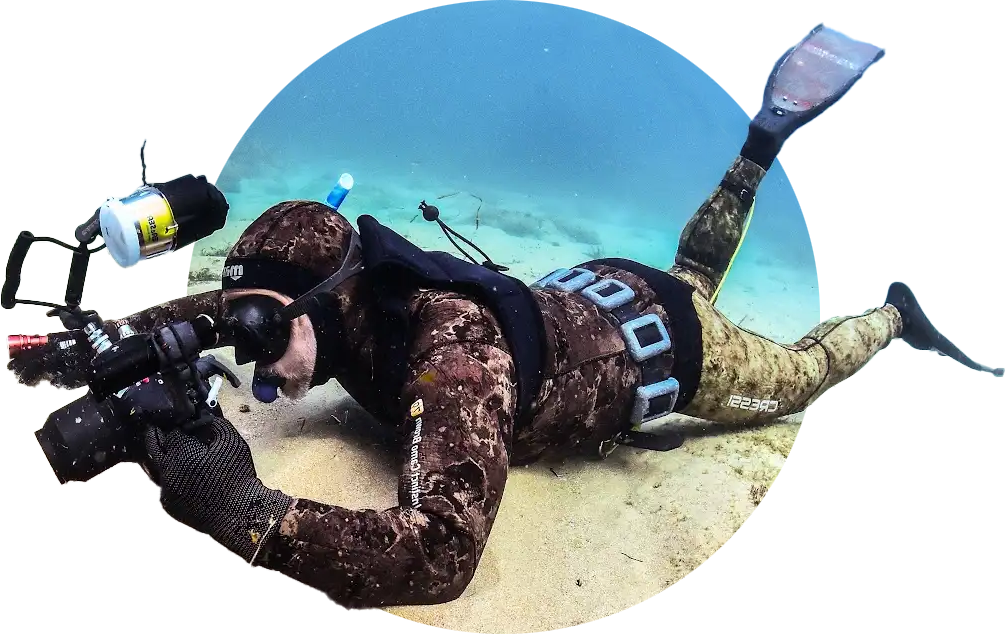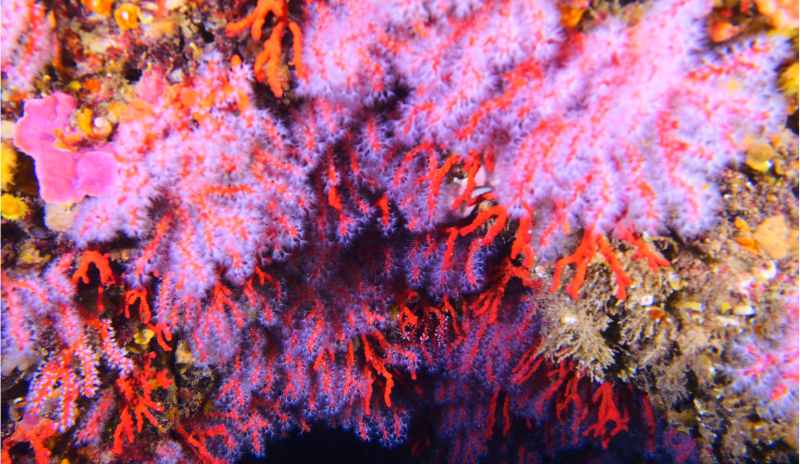The Mediterranean Sea is home to a great diversity of corals, essential for the balance of marine ecosystems. The identification of these species during the BioMARató is key to helping to better understand their distribution and state of conservation. Although within MINKA we have experts who will help you identify all your observations, we believe that this post can facilitate the observation of the different species of corals found in our waters.
Corals, which belong to the group of cnidarians (like jellyfish), are invertebrate marine organisms with a simple structure, but with a great diversity of shapes and colors. Within their taxonomy, we find hard corals (Scleractinia), which form massive colonies with calcified skeletons, such as Cladocora caespitosa, and soft corals (Octocorallia), such as the red coral Corallium rubrum.

This classification is essential to understanding the ecological role of each type of species. Below is a summary of this classification:
OCTOCORALLIA
Paramuricea clavata
It is possibly the queen of the gorgonians of the Mediterranean Sea. It is a tree-shaped colony with many irregular branches in a single plane. This species has an internal skeletal axis secreted by all the individuals of the colony (the polyps). Each polyp has a specific function (reproduction, feeding, etc.) and presents cnidocysts (urticating cells, also present in jellyfish and in all organisms within the Cnidaria group). It usually presents different colors, although red is the most common. It can live from 15 m to 100 m deep, always fixed to a substrate and located in favor of the currents. It can be confused with colonies of the false coral Alcyonium coralloides, also of soft texture, which usually grow on dead colonies of Paramuricea sp.
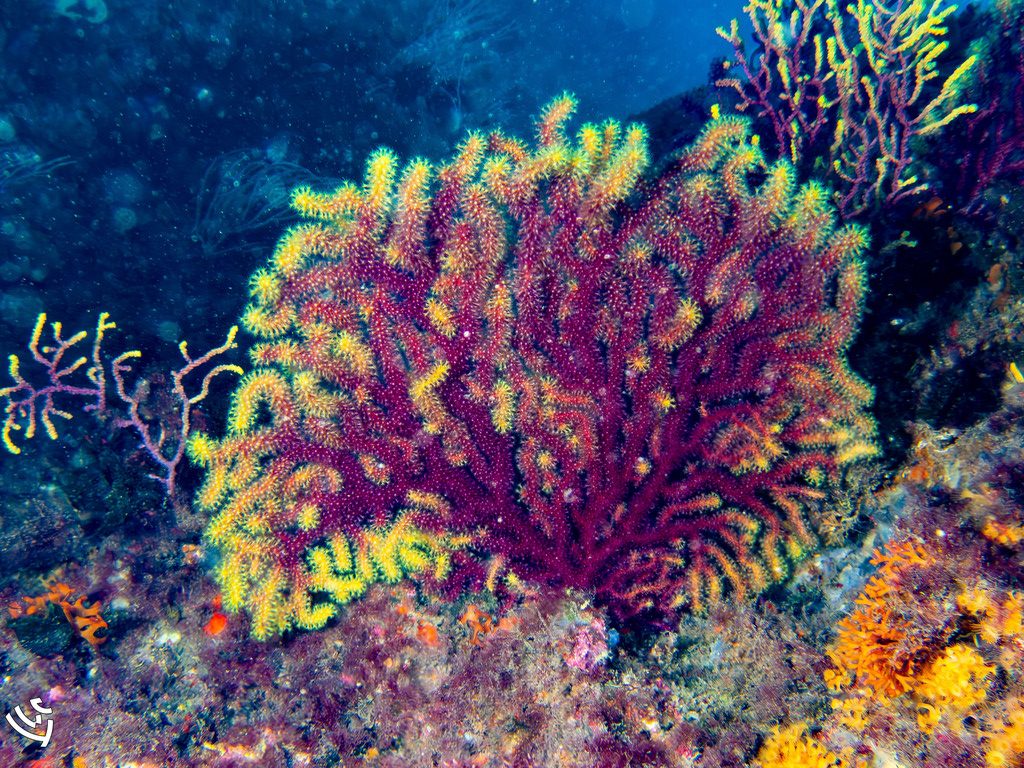
Autor: jmturon (MINKA)
Eunicella cavolini
It is a gorgonian with variable and very flexible branches. Its color can vary from yellow to reddish, and it measures between 10 and 50 cm in length. It usually lives on rocks, on vertical walls between 10 and 40 m deep, although it has also been observed at greater depths. This species can be confused with Eunicella verrucosa, although the latter is scarce and its polyps emerge from a fairly prominent promontory on the branches.
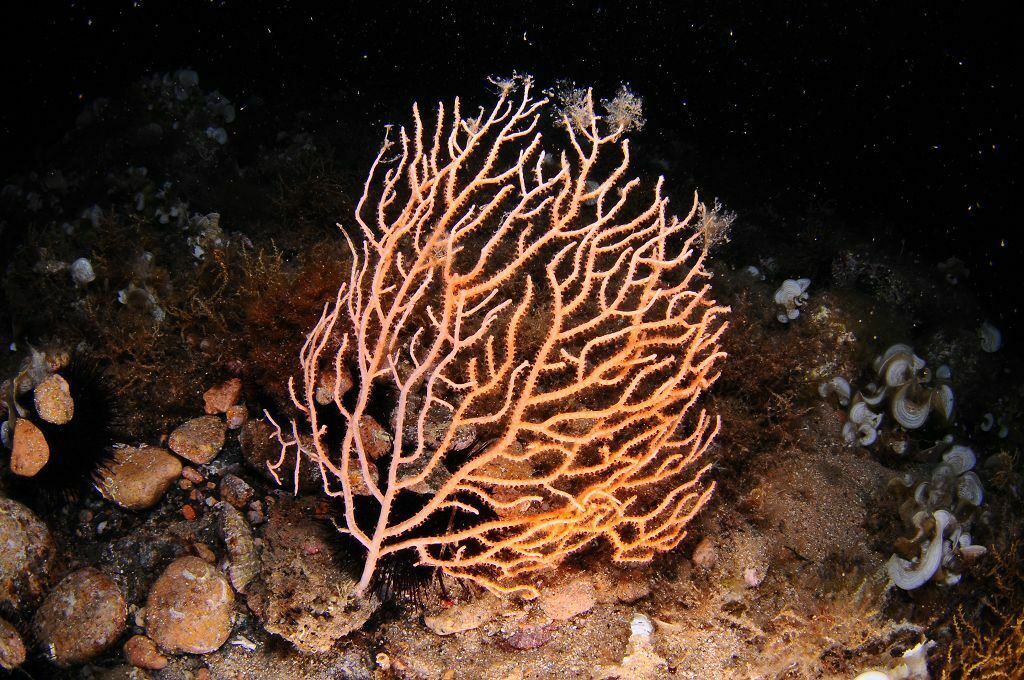
Autor: xasalva (MINKA)
Leptogorgia sarmentosa
This gorgonian is the easiest to see along the entire Catalan coast, as it is found at depths of between 10 m and 30 m, approximately. It usually lives on rocky bottoms in dark areas. It can be confused with Eunicella cavolini, but it has a characteristic feature: the skeleton thins as we approach the outer edge of the colony.
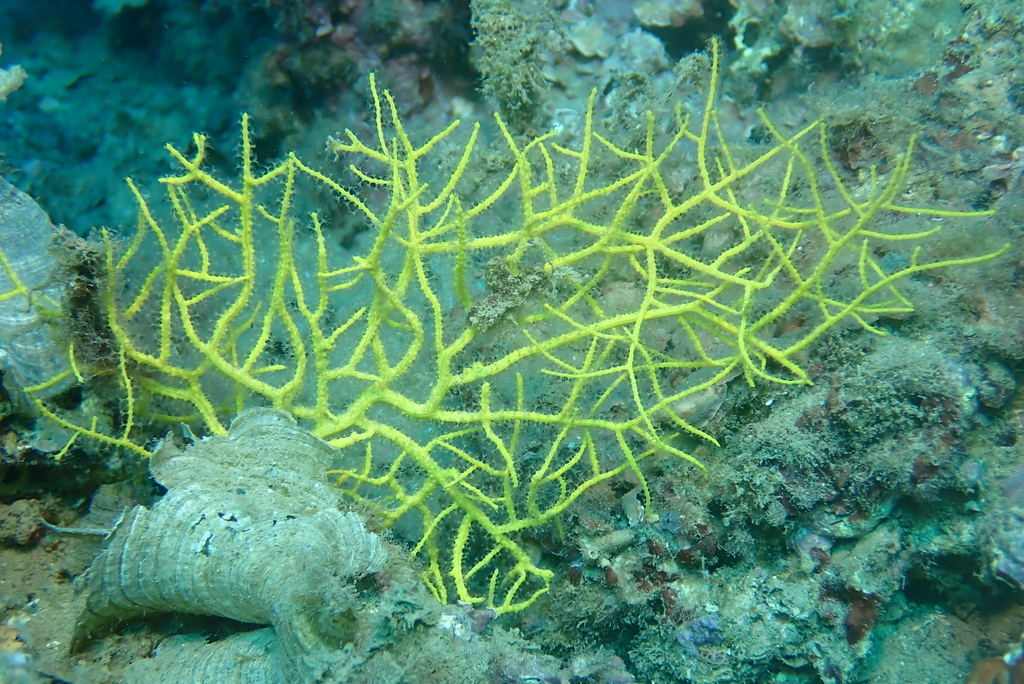
Autor: albertvim (MINKA)
Corallium rubrum
Red coral is possibly the most famous coral in the Mediterranean Sea, fished since ancient times. The Greeks and Romans collected it by freediving, believing that it had medicinal properties or to use it in jewelry and decoration. This activity, which is still practiced today, is a serious threat to its population, since its growth is very slow (3-5 mm per year). The polyps of this coral are white and very showy. It usually lives on rocky substrates in areas with little or no light, at depths of between 30 and 150 m.
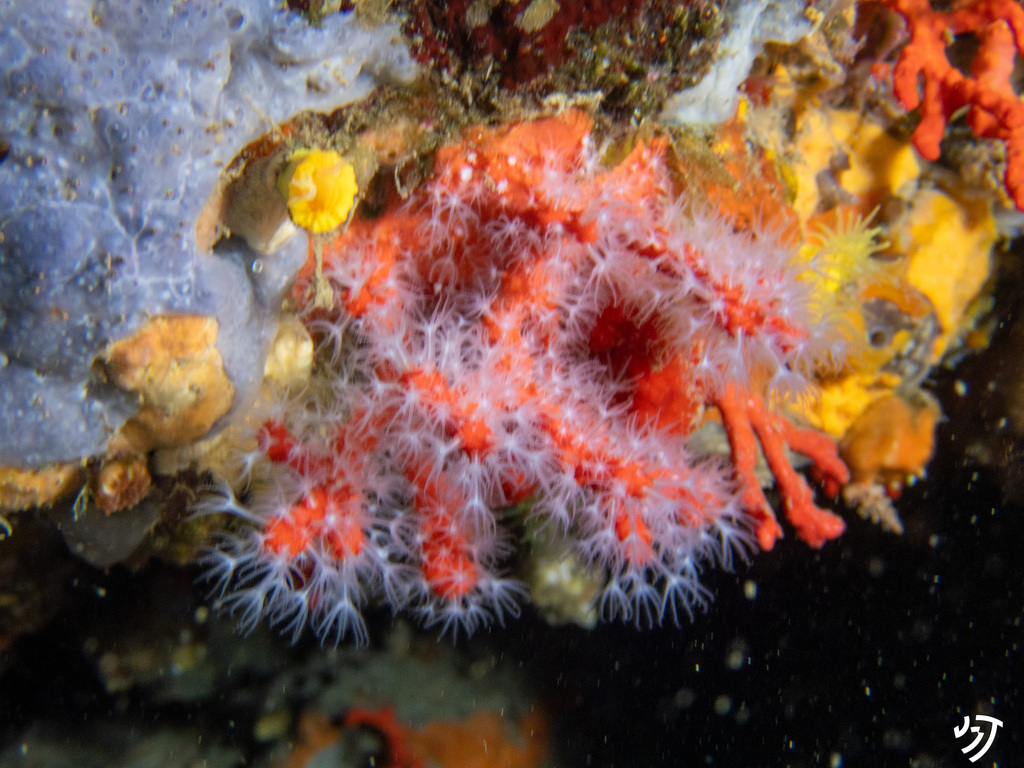
Autor: jmturon (MINKA)
SCLERACTINIA
Cladocora caespitosa
This organism is a colonial coral with a very compact skeleton, capable of forming large mounds of up to 1 m, with a structure similar to that of tropical corals. This species has a symbiotic association with unicellular algae (zooxanthellae), which provide it with nutrients. It is found in the infralittoral zone, up to 50 m deep, both on rocky bottoms and in Posidonia oceanica meadows. They can live up to 300 years, but currently, due to climate change, they are suffering from a major bleaching and are in decline.
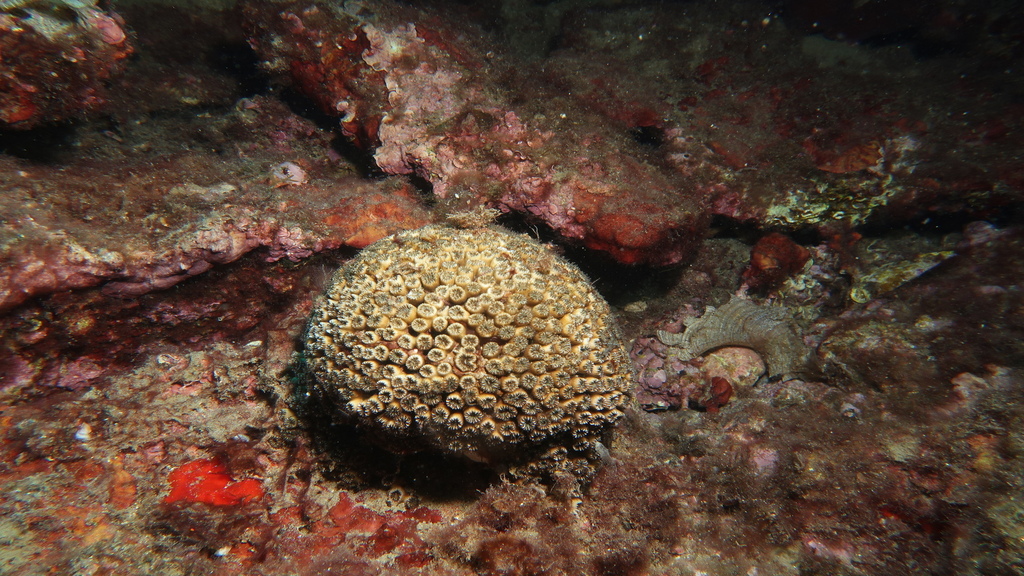
Autor: ealcaniz (MINKA)
Oculina patagonica
Oculina patagonica is a species of hard coral that has gained attention for its rapid expansion in the Mediterranean Sea, despite being native to the Atlantic coast of South America. This coral forms massive colonies, with a calcareous skeleton and small polyps of white or pale yellow color. Its proliferation is linked to the increase in temperature caused by climate change. One of its peculiarities is its resistance to environmental stress, which allows it to survive in adverse conditions, such as pollution or thermal variations. However, it remains susceptible to bleaching due to the loss of zooxanthellae.
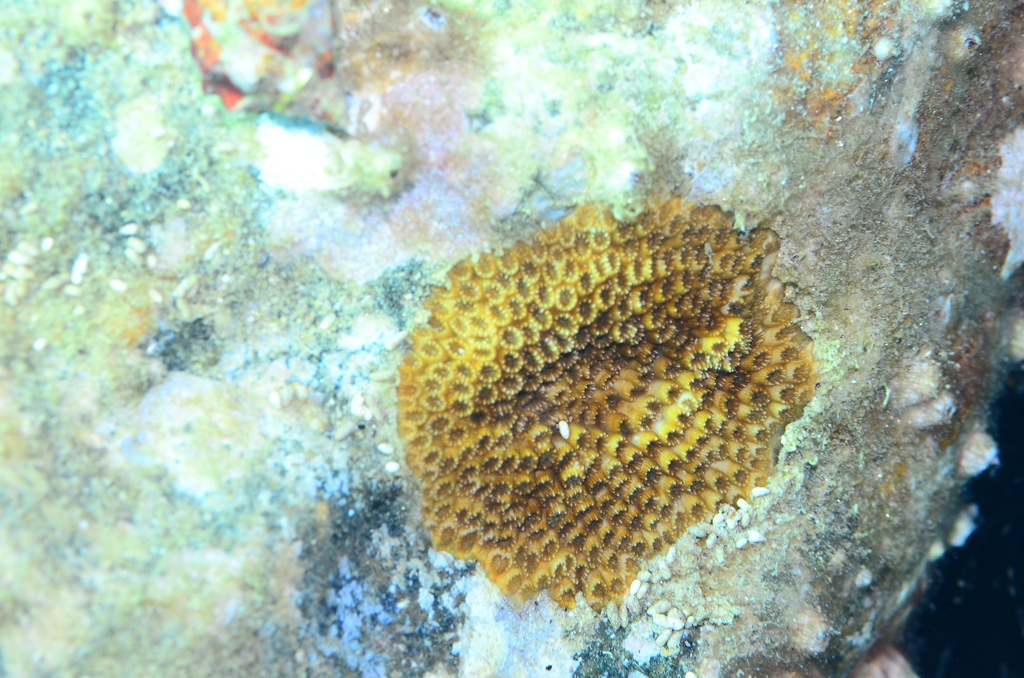
Autor: virginia_canet (MINKA)
Participating in the BioMARató is a very important opportunity to help monitor species such as Oculina patagonica and contribute to knowledge about its distribution and impact in the Mediterranean. By observing and identifying this coral and other marine organisms, citizens can provide valuable data that will help scientists study its expansion and develop strategies for the conservation of marine biodiversity.
Author: Judith Camps Castella (Plàncton, Divulgació i Serveis Marins).

